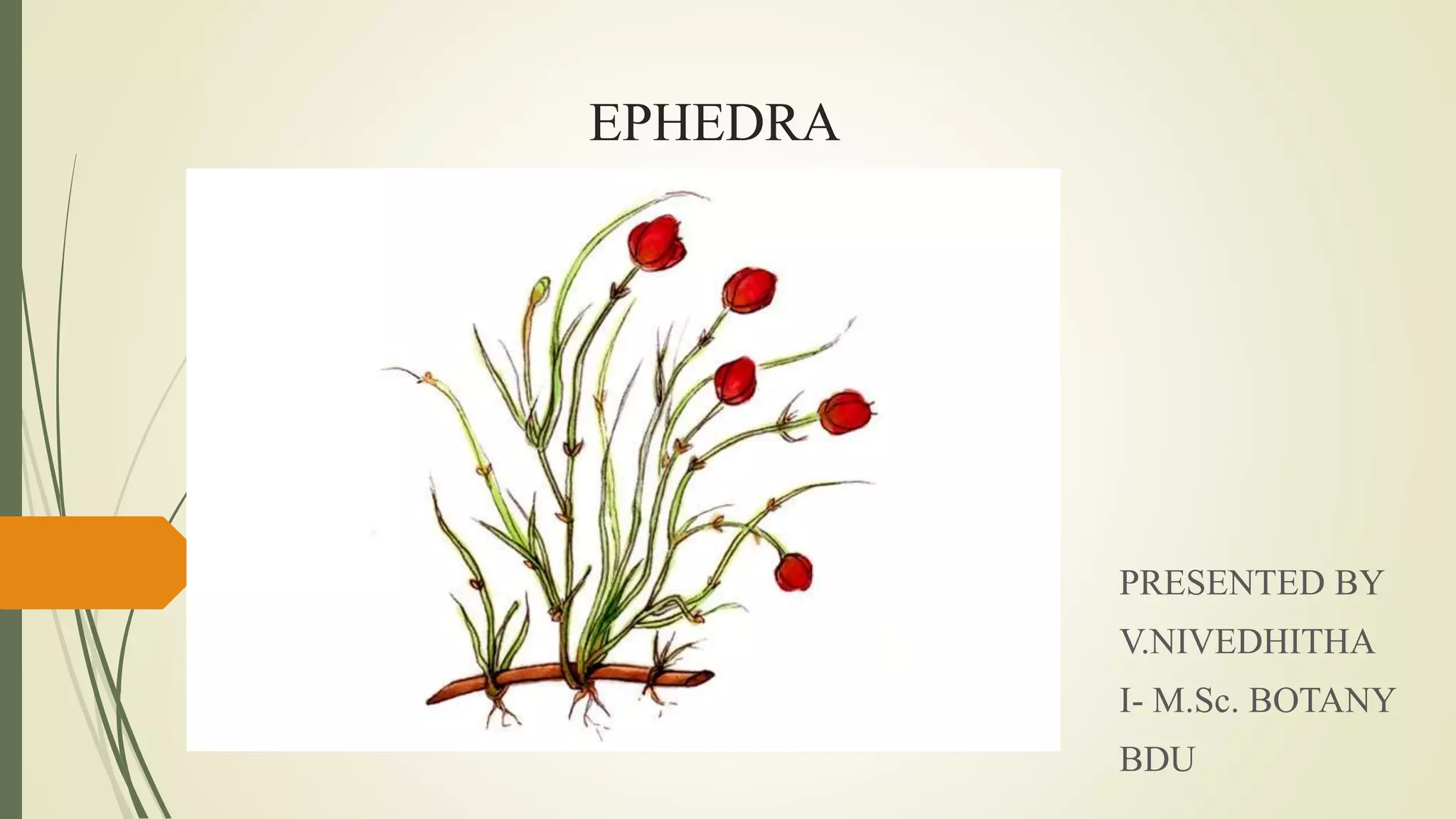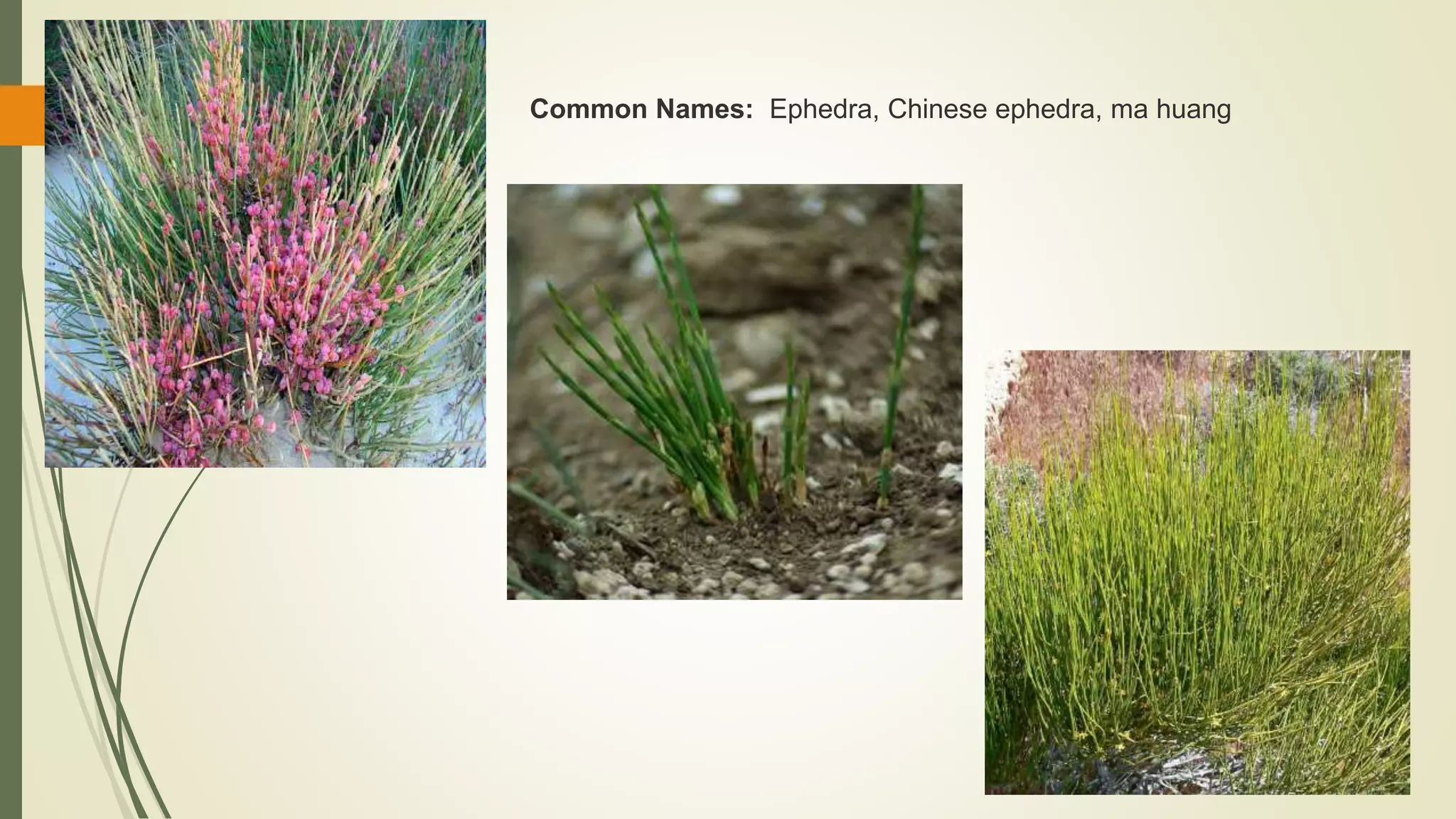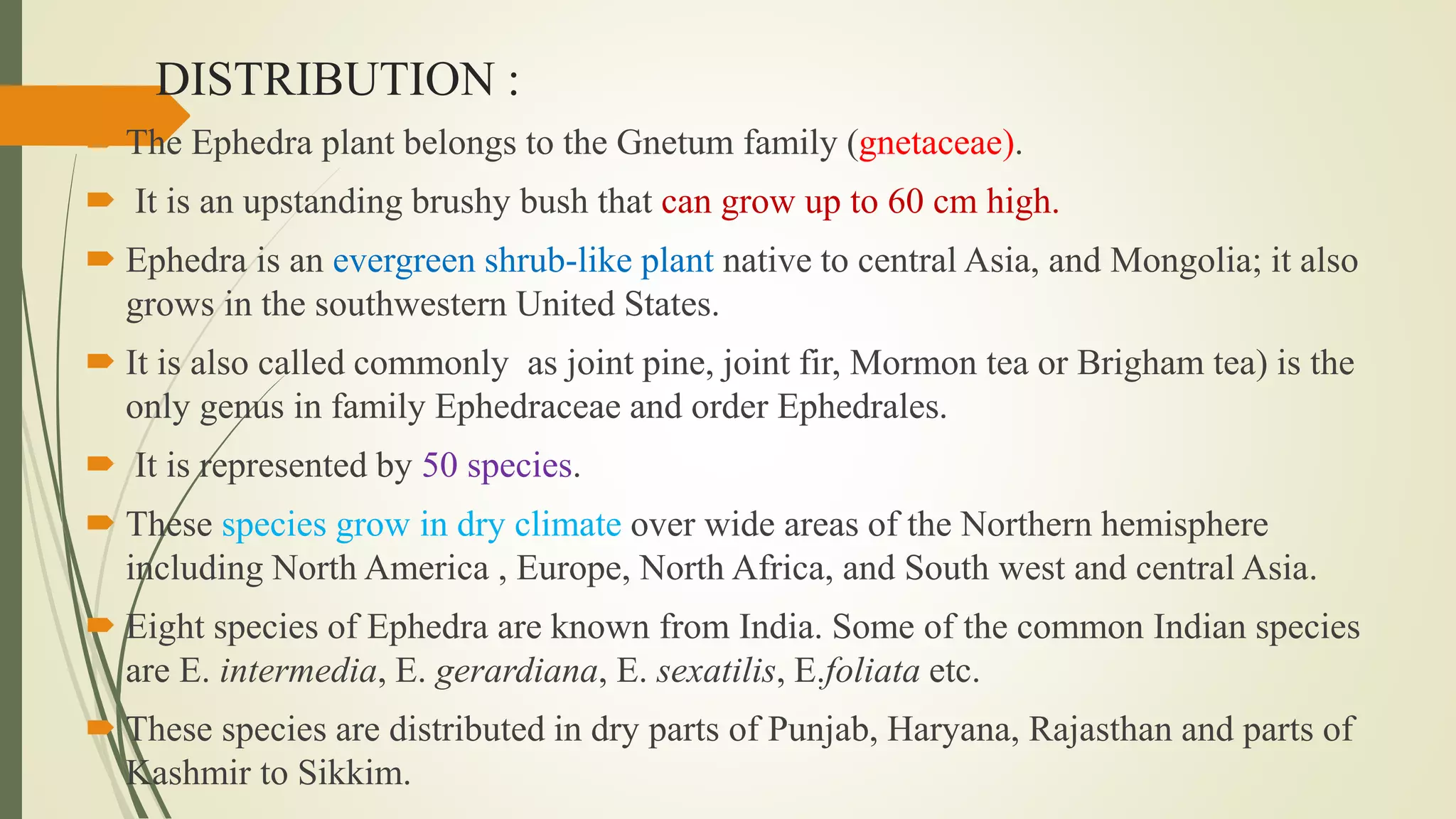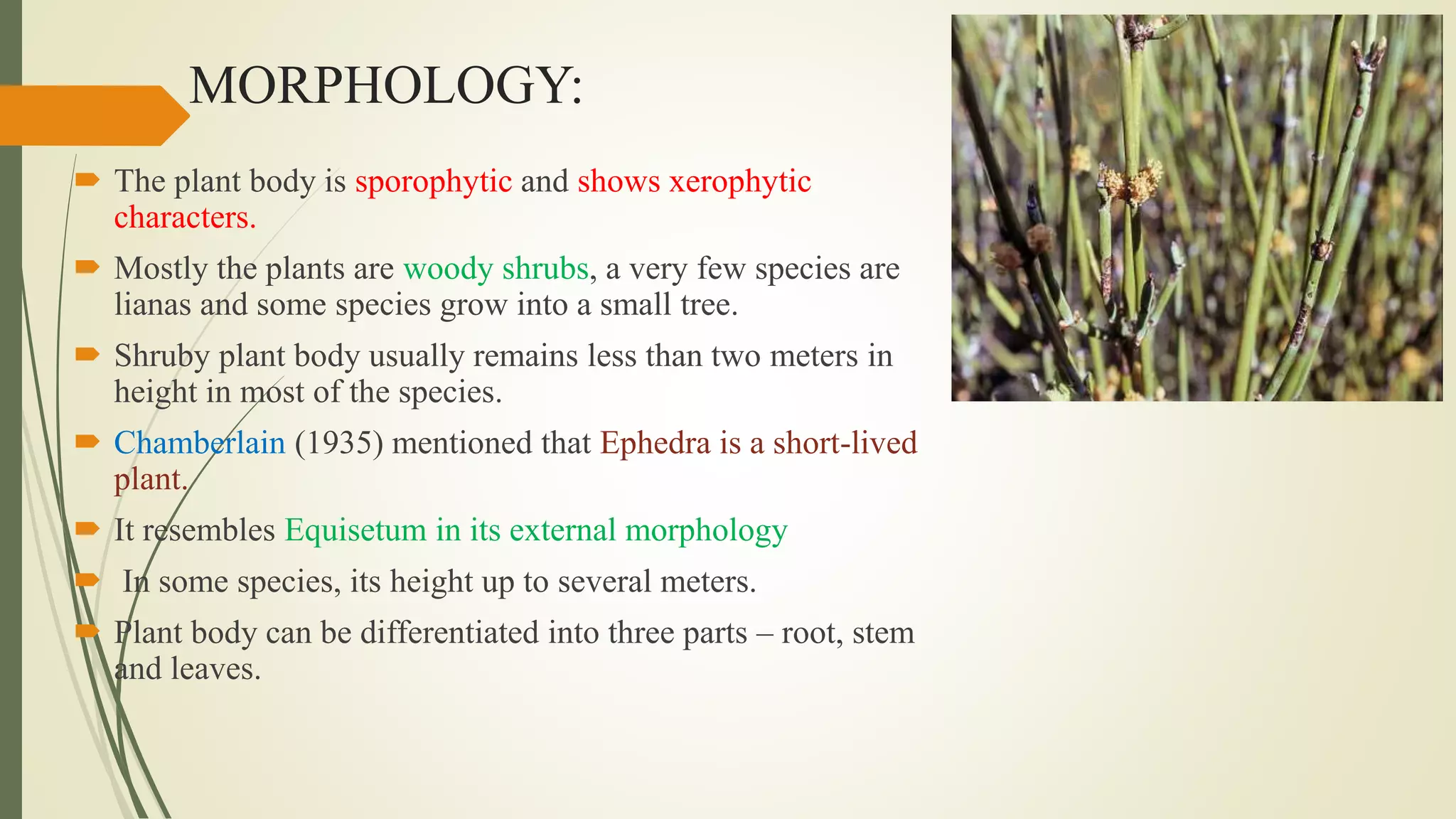Ephedra is an evergreen shrub native to central Asia and parts of North America. It has woody stems that resemble Equisetum and perform photosynthesis. Ephedra contains ephedrine, an alkaloid used to treat asthma, bronchitis, and other respiratory illnesses. It has a taproot system and scale-like leaves arranged in opposite pairs. Ephedra is distributed in dry regions and exhibits xerophytic adaptations like thick cuticles and sunken stomata.














